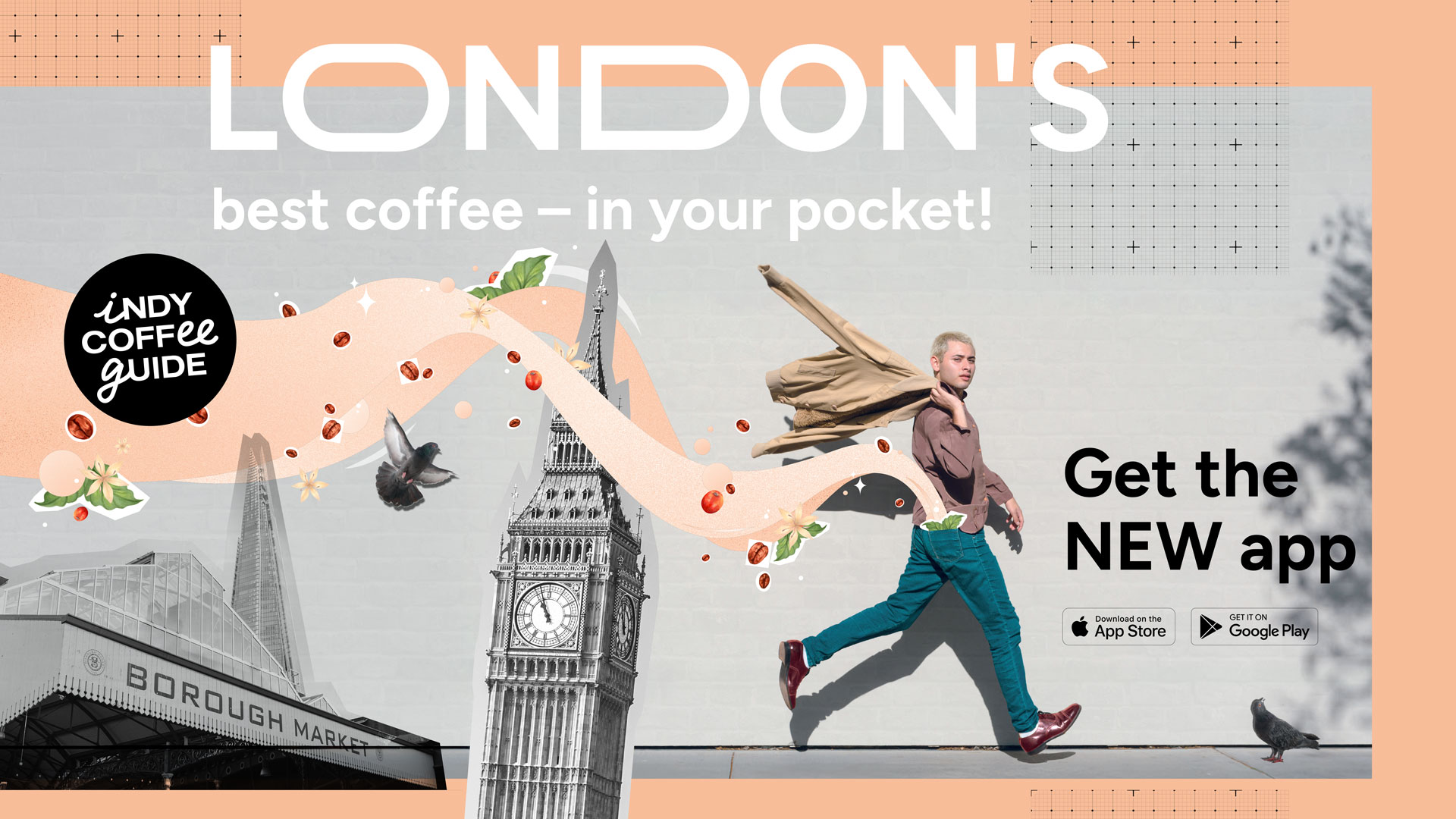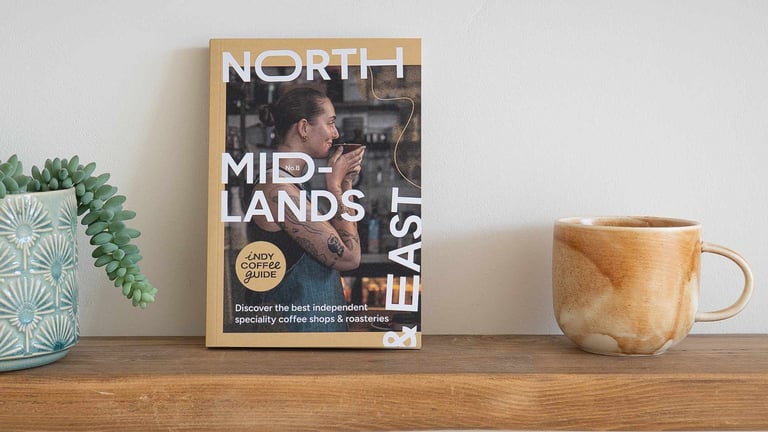DIY coffee roasting
You’ve kitted out your kitchen with the latest brewing gear, nailed a killer Chemex recipe and sussed out the steam wand, but are you ready to roast beans at home? We roped in a few industry insiders to find out what it takes
How to roast coffee: You’ve kitted out your kitchen with the latest brewing gear, nailed a killer Chemex recipe and sussed out the steam wand, but are you ready to roast beans at home? We roped in a few industry insiders to find out what it takes
Feature from the Scottish Independent Coffee Guide No 3 – buy your copy here.
Green bean 101
You’ve kitted out your kitchen with the latest brewing gear, nailed a killer Chemex recipe and sussed out the steam wand, but are you ready to roast beans at home? We roped in a few industry insiders to find out what it takes
Consistency is key
‘When selecting green beans, you need to consider their consistency,’ explains Ross.
‘Single origin coffees are usually graded and screened to be of uniform size and density, so should roast consistently in one batch.
‘If you’re looking to blend coffees which have been processed or prepared differently, however, they will often require a different treatment in the roast to get the most out of their flavour potential.’
Process = profile
‘Coffee cherries from the same tree in Ethiopia can produce wildly contrasting cups depending on the way in which they’ve been processed,’ says Ross. ‘This will affect how the beans behave in the roast.’
Washed process Cherry pulp is removed mechanically before the beans are fermented and washed to remove all the remaining fruit. The finished profile is delicate and refined, and tends to present citrus and floral notes like lavender, lemon and hops. Their high altitude growth means a good injection of heat is needed to permeate the dense beans and ensure an even roast.
Natural process This involves drying the coffee cherries in the sun on raised beds, allowing the sugars in the fruit to transfer into the bean. This process produces more jammy flavours, with bags of juicy fruits and a creamy body. Natural coffees require a more gentle treatment to ensure the sugars caramelise into a pleasantly sweet profile.
Buying greens
‘Finding a small enough supply for the home roaster can be a challenge as importers tend to distribute large volumes,’ says Ross. ‘We import green beans from all around the world for speciality roasters but we also work with IKAWA to supply home roasters. Many speciality roasters will also sell green beans in smaller batches, so contact your local roasters for advice.’
Flash in the pan
It doesn’t take a professional chef to fry an egg or roast a chicken, but surely roasting coffee can’t be as simple as turning on the oven?
‘Our roastery started out as a kitchen pan, hob and handful of green beans,’ explains Neil Buchan of Kinross’ Unorthodox Roasters. ‘We couldn’t afford to go straight in with a commercial roaster so experimenting in the pan was an easy and affordable way to go about it.’
Unorthodox’s guide to pan roasting
1. Heat a large, dry pan on the hob. Add a handful of green beans and start a timer.
2. Maintain a high heat and continually stir the beans so they don’t burn.
3. Once the beans start to turn from green to cereal colour and begin to lightly smoke, drop the heat and continue to stir.
4. At around the 8 minute mark, the coffee will begin to pop. This is called ‘first crack’.
5. Turn down the heat and roast for a further 2 minutes while the chaff is expelled and coffee develops.
6. It’s up to you when to stop the roasting process – colour and smell are good indicators, or play it safe with 2-3 minutes after first crack.
7. Remove the beans from the heat and stir in a metal sieve.
8. Grind, brew and luxuriate in caffeinated smugness.
Domestic dilemmas
‘Roasting coffee in a pan is a fun way to experiment, but from a sensory and quality point of view it’s not a great method of roasting,’ says Lisa Lawson, qualified SCA trainer and founder of Dear Green Coffee in Glasgow. ‘To produce great tasting coffee you need to be able to control variables such as temperature.’
While you may think that using the oven instead of a pan solves the temperature conundrum, it also has drawbacks: ‘As the coffee cannot be agitated it will scorch and roast unevenly. There would be no way to manipulate flavour either, as there is little control over the heat transfer or air flow,’ says Lisa.
So what are the options if you’re still keen to see the process through from green bean to cup?
‘Unfortunately, it’s going to take a bit of cash to craft great tasting coffee at home – a brand new commercial single barrel roaster could set you back thousands. However, there are some affordable alternatives. At Dear Green we’re rolling out roasting courses on a 1kg Probat. We also use an IKAWA – their recently launched home edition is opening new doors for burgeoning roasters.’
Ikawa power
Roasting coffee from your phone for your Saturday morning hit may sound outré, yet keen connoisseurs across the country are cooking up beans in their kitchen with this bit of kit
‘Until recently, many coffee lovers had been deterred from roasting at home as it was perceived as messy and complex,’ explains IKAWA’s Alex Georgiou. ‘So we designed the IKAWA At Home to make the process super accessible.’
Roasting 50g of green beans at a time, the compact IKAWA roaster has long been used by professional roasters to road-test samples and experiment with new blends. The recent introduction of a home edition allows speciality enthusiasts to take their interest to the next level.
‘The method is simple: select a recipe on the app. The machine then follows the pre-defined roast curve, allowing the user to watch the roast happening and appreciate the aromas. The whole process is no longer than nipping to the nearest speciality shop for a fresh bag of beans.’
‘To make it even easier, we’ve curated a selection of great coffees from the most iconic origins on the planet, which we stock on our website. Each coffee has its own distinct characteristics to help roasting freshers appreciate the breadth of flavours and understand how roasting can accentuate different aspects.’
Roasting glossary
Chaff A papery substance that’s shed from the beans during roasting and which must be removed.
First crack During roasting, when high pressure inside the bean causes it to split.
Origin The specific region of a country where a bean is grown.
Process The process by which the green bean has been dried. This can be washed, natural or honey.
Varietal The variety of bean. They each have specific characteristics.












